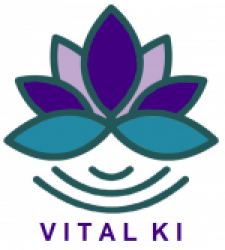Tuina Massage
[frame type=”left” width=”250″ height=”155″ src=”https://vitalki.com/wp-content/uploads/2012/04/image-tuina-massage.jpg”]Tuina means to push and pull. The Tuina is the name given to Chinese Medical Massage. Tuina Massage is based on Traditional Chinese Medicine and incorporates techniques similar to Western and Asian massage, chiropractic, osteopathic, and western physical therapy.
Tuina uses a variety of hand techniques and passive and active stretching to restore correct anatomical musculo-skeletal relationships, neuromuscular patterns, and to increase the circulation of Qi and Blood to remove biochemical irritants. Acupoints may be selected to rebalance and harmonize the flow of Qi and Blood through the organ meridians in order to facilitate healing and prevent further injury.
What conditions are appropriate for Tuina?
Any musculoskeletal disorder may benefit from Tuina. This includes shoulder problems, joint pain, back, hip, thigh, knee, lower leg and ankle disorders. Tuina is appropriate for both acute and chronic pain.
Although Tuina may be used for any musculo-skeletal problem, it is a great bodywork modality for the maintenance of optimal health and the prevention of disease.
How should I prepare for a Tuina treatment?
As Tuina does not usually apply any oils or use mechanical devices, it is not necessary to undress during a session. You will be asked to wear loose slacks such as gym pants/slacks and a light, natural fiber T-shirt or blouse, or you may bring the above clothing and change when you arrive.
The practitioner will also request that the client arrive neither too hungry nor too full (ie: if one is hungry, they should eat; if one is full, they should digest). If you are coming immediately after work, it would be appropriate to have a small snack mid-afternoon, or an hour before arriving.
Tuina may be performed either on a padded mat on the floor, a chair or on a massage table.
How often and how many Tuina treatments are necessary?
This varies greatly, depending primarily on the concern and condition of the client. If the concern is acute, one to three treatments, as soon as possible, are often sufficient to resolve the pain and improve flexibility. If the problem is chronic, treatment on a weekly, twice monthly, or monthly schedule may be advised.
If the client’s primary concern is maintenance of health and prevention of illness, a monthly treatment may be recommended.

